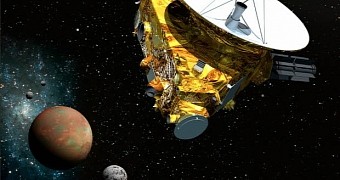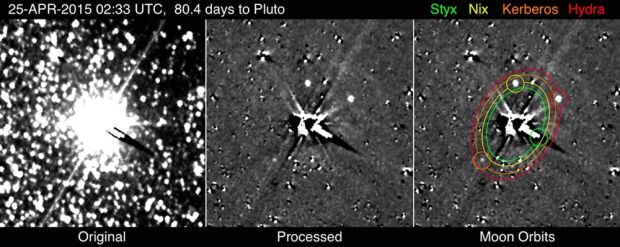For the time being, astronomers are aware of a total of five moons orbiting dwarf planet Pluto. Their names are Charon, Hydra, Nix, Kerberos and Styx. Charon was discovered in 1978, Hydra and Nix both in 2005, and Kerberos and Styx in 2011 and 2012, respectively.
Although these moons of Pluto were identified quite a while back, it wasn't until NASA launched its New Horizons mission that scientists had the chance to take a closer look at the celestial bodies.
Thus, it was in July 2013 that the New Horizons probe produced its first view of Charon, Pluto's largest documented satellite. Images of Hydra and Nix followed in July 2014 and January 2015, respectively.
As for teeny tiny Kerberos and Styx, it was between this year's April 25 and May 1 that the spacecraft's Long Range Reconnaissance Imager camera managed to catch a glimpse of them at long last. The resulting images, a first for New Horizons, are available below.
“It’s a complete Pluto family photo - or at least a photo of the family members we’ve already met. New Horizons is now within sight of all the known members of the Pluto system,” NASA scientists say.
The moons were photographed from an impressive distance
This latest view of the Pluto system that the New Horizon's probe beamed back to Earth just a few days ago was obtained from a distance of over 55 million miles (roughly 88.5 million kilometers).
Just to put things into perspective, it must be said that Kerberos has a diameter of just 6 to 20 miles (10 to 30 kilometers). Styx appears to be even smaller, with astronomers estimating it to measure a measly 4 to 13 miles (approximately 7 to 21 kilometers) across.
Commenting on the spacecraft's success in imaging these orbs for the first time since the debut of its mission, scientist John Spencer of the Southwest Research Institute in Boulder, Colorado pointed out, “New Horizons is now on the threshold of discovery.”
Later this year, on July 14, the New Horizons probe is set to complete a flyby of the Pluto system, which sits at an average distance from the Sun of about 3.7 billion miles (5.9 billion kilometers).
Thus, astronomers say the closest point of its orbit brings Pluto and its accompanying moons within 2.7 billion miles (4.4 billion kilometers) from our parent star. The most distant orbit point, on the other hand, sends it 4.6 billion miles (7.4 billion kilometers) away.
Mission scientists at NASA expect that, during its July 14 flyby of the Pluto system, the New Horizons spacecraft will come within 7,800 miles (12,500 km) of the dwarf planet's surface.

 14 DAY TRIAL //
14 DAY TRIAL // 

